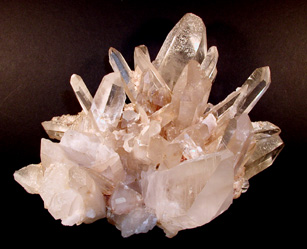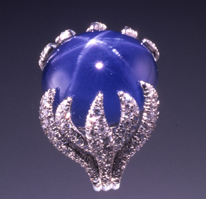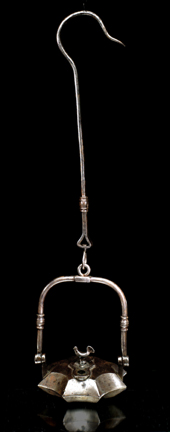
Geotimes Home | AGI Home | Information Services | Geoscience Education | Public Policy | Programs | Publications | Careers

 With only
a month more of summertime, consider taking a trip to the Bruce Museum of Art
and Science in Greenwich, Conn. Its newest exhibit, dedicated to all things gem,
is sure to delight the senses and stimulate the mind.
With only
a month more of summertime, consider taking a trip to the Bruce Museum of Art
and Science in Greenwich, Conn. Its newest exhibit, dedicated to all things gem,
is sure to delight the senses and stimulate the mind.  Former museum
director Jack Clark says that the Bruce has a long history of collecting mineral
specimens. Over the years, through acquisitions and generous gifts, the mineral
collection has become "a small jewel in itself," he says.
Former museum
director Jack Clark says that the Bruce has a long history of collecting mineral
specimens. Over the years, through acquisitions and generous gifts, the mineral
collection has become "a small jewel in itself," he says.  "Unearthing
the Allure of Gems" also explores how a gem is transformed — figuratively
and literally — into a jewel. Soohoo wanted the visitor to understand why
humans use gems in jewelry and to appreciate the diversity of gem minerals. Three
ancient Egyptian amulets on display — one of lapis lazuli (blue), one carnelian
(red) and one feldspar (green) — show how gem materials gained amulet properties
because of their color: Red signified blood and life-force, blue the sky, and
green fertility.
"Unearthing
the Allure of Gems" also explores how a gem is transformed — figuratively
and literally — into a jewel. Soohoo wanted the visitor to understand why
humans use gems in jewelry and to appreciate the diversity of gem minerals. Three
ancient Egyptian amulets on display — one of lapis lazuli (blue), one carnelian
(red) and one feldspar (green) — show how gem materials gained amulet properties
because of their color: Red signified blood and life-force, blue the sky, and
green fertility.
 |
Geotimes Home | AGI Home | Information Services | Geoscience Education | Public Policy | Programs | Publications | Careers |